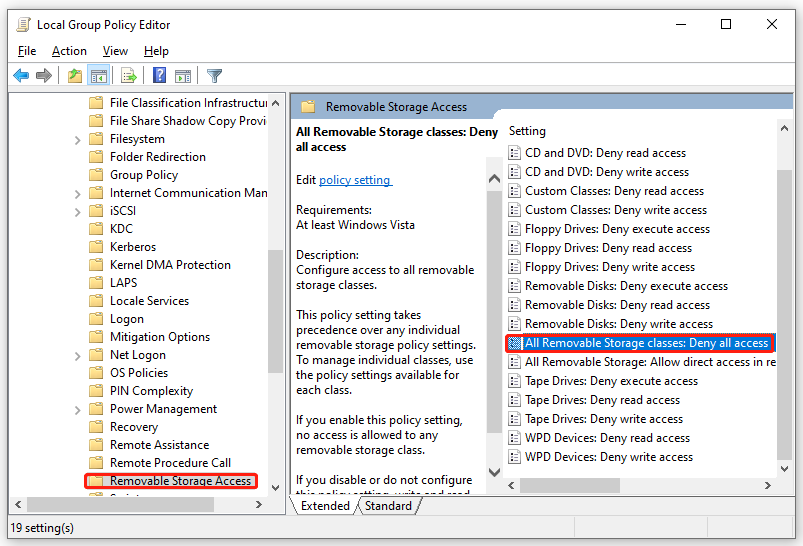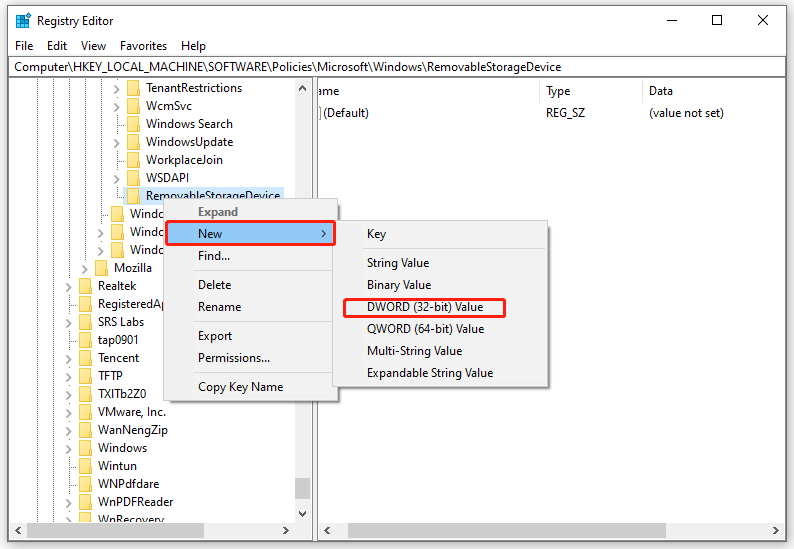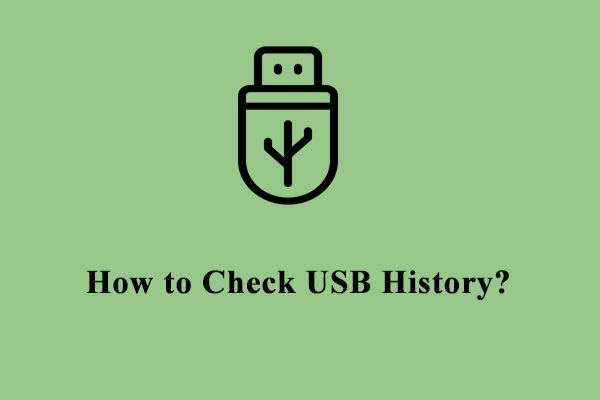Unknown removable devices can pose security problems on your computer, so it’s necessary to restrict their access. In this post from MiniTool, we will introduce how to disable access to removable storage devices on Windows 10/11 in 3 ways.
Why Do You Need to Disable Access to Removable Storage Devices?
Computers come with USB ports to standardize the connection of external devices including keyboards, mouse, printers, disk drives and more, allowing communication and power supply. While there are times when you want to disable access to removable storage devices to prevent spread of malware or data leakage.
If you need to stop others from transferring private data or installing unknown malware, scroll down to get 3 ways to block removable devices on your computer.
Disable Access to Removable Storage Devices via Local Group Policy Editor
To block removable devices on your computer, you can resort to Local Group Policy Editor which enables you to configure a variety of computer and user settings. To do so:
Step 1. Press Win + R to open the Run box.
Step 2. Type gpedit.msc and click on OK to start Local Group Policy Editor.
Step 3. Navigate to the path below:
Computer Configuration > Administrative Templates > System > Removable Storage Access
Step 4. In the right pane, double-click on All Removable Storage classes: Deny all access.

Step 5. Tick the Enabled option.
Step 6. Click on Apply & OK to make the changes effective.
Disable Access to Removable Storage Devices via Registry Editor
Modifying some related registries in Registry Editor can achieve the same results. Here’s how to do it:
MiniTool ShadowMaker TrialClick to Download100%Clean & Safe
Step 1. Press Win + R to open the Run box.
Step 2. Type regedit.exe and hit Enter to launch Registry Editor.
Step 3. Copy and paste the following path in the address bar and hit Enter:
HKEY_LOCAL_MACHINE\SOFTWARE\Policies\Microsoft\Windows
Step 4. Right-click on the Windows registry to select New > choose Key > rename it RemovableStorageDevice > hit Enter.
Step 5. Right-click on the new key > select New > DWORD (32-bit) Value > name it Deny_All and hit Enter.

Step 6. Double-click on the Deny_All value and change its value data from 0 to 1.
Step 7. Restart your computer to refresh these changes. If you want to regain access to your removable storage devices, change Deny_All ‘s value data from 1 to 0.
Disable Access to Removable Storage Devices via Device Manager
Device Manager allows you to view and manage all the hardware on your computer, so you can also utilize this feature to block USB access. Here’s how to do it:
Step 1. Right-click on the Start menu and select Device Manager.
Step 2. Expand Universal Serial Bus controller.
Step 3. Right-click on the USB ports that you want to disable and select Disable device.

Comparison of These Three Methods
Here’s a quick comparison of the 3 methods for disabling access to removable storage devices:
| Limitation | |
| via Local Group Policy Editor | Not available on Windows Home |
| via Registry Editor | Incorrect changes might lead to serious system problems. |
| via Device Manager | Possible effects on the use of printer, keyboard, mouse, and other USB-connected devices. |
Final Words
This post walks you through 3 ways on how to disable access to removable storage devices with ease. Different methods have different merits and demerits, so you can choose the one as required.

User Comments :